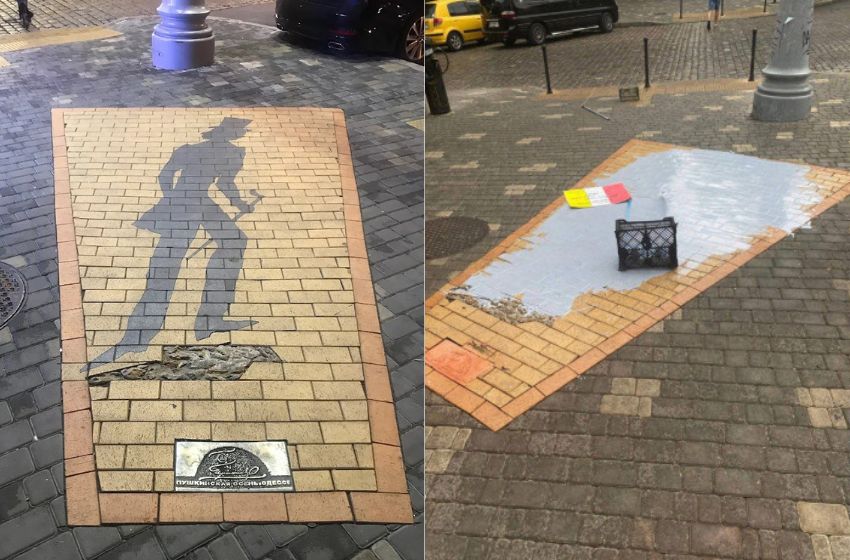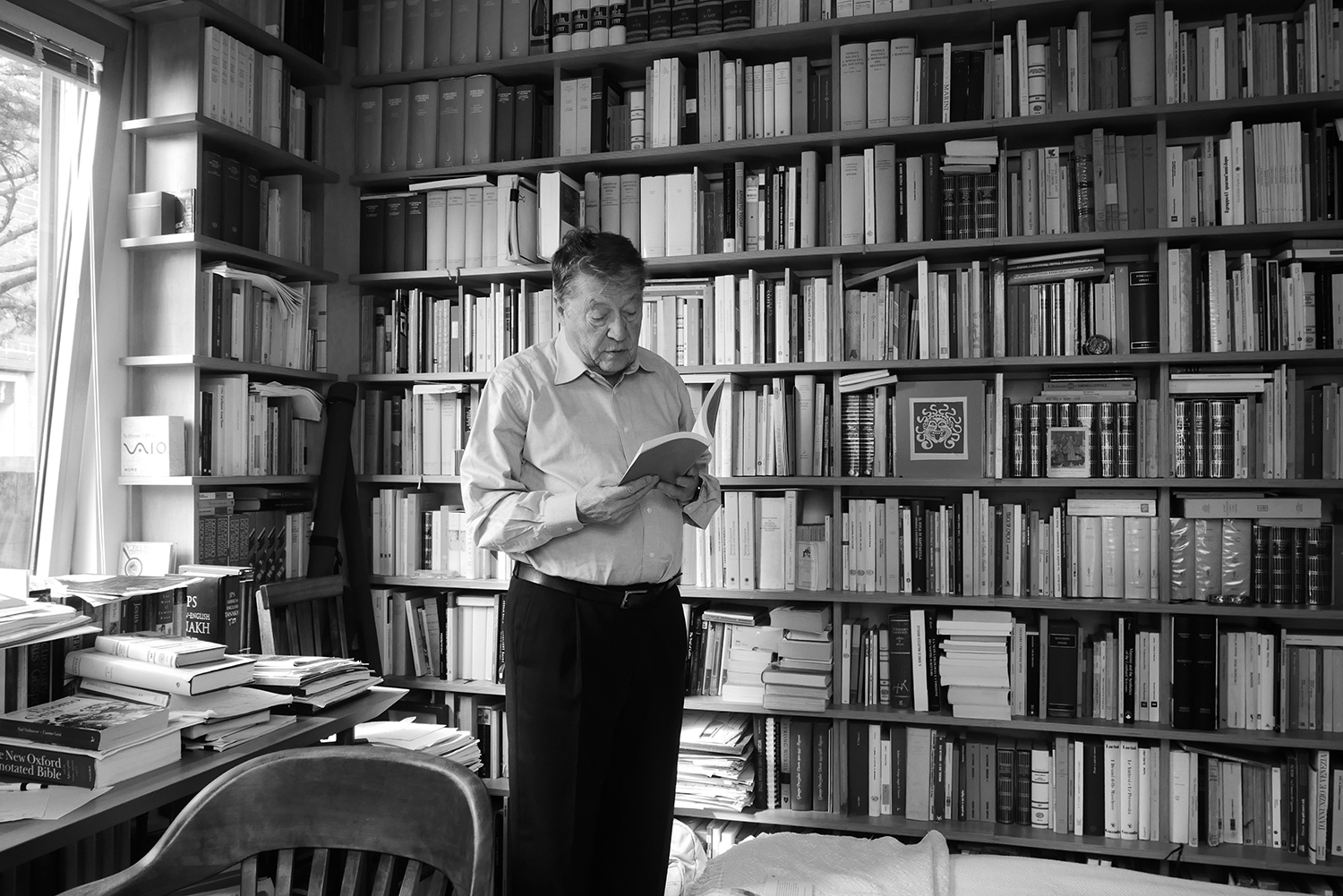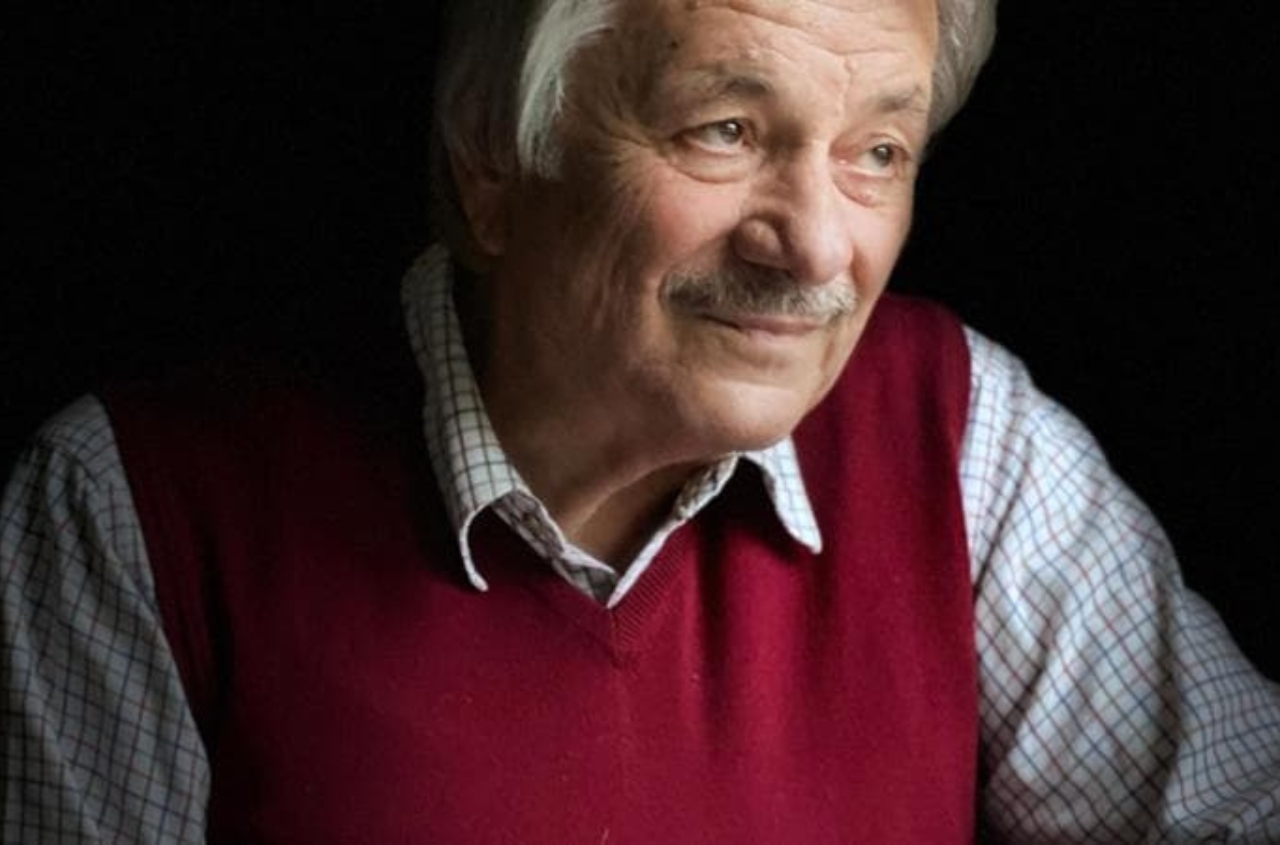In the early hours of 11 August 2025, Pushkin’s Shadow — a work of art embedded in the pavement of a central street in Odessa, depicting the easily recognisable silhouette of the famous Russian poet — was vandalised with grey paint.
At the site of the vandalism, a sign from a non-existent utility company called “Porto-Franco” was found. Later, some unidentified activists claimed responsibility for the act with the following message: “Odessa utility workers helped the clouds descend from the sky. Pushkin’s shadow has disappeared, and we will not see it again, we hope, just as we will not see Pushkin on Birzhevaya in the near future. Everything Muscovite belongs in the dump, that is, in Muscovy. At the same time, the Odessa city government is totally sabotaging the process of decolonisation and loyally defending the ‘Russian world’.”
This gesture, following other acts of vandalism against historic signs and monuments to figures of the past, is part of a nationalist campaign aimed at erasing the artistic and cultural heritage of Odessa and other Ukrainian cities connected to the Russian imperial or Soviet tradition. The favourite target is the Russian poet who lived in Odessa from 1823 to 1824.
Aleksandr Pushkin had been exiled on the Black Sea for his opposition to the Tsarist system. The city’s cosmopolitan atmosphere and lively social life greatly influenced him, who began writing his novel in verse Eugene Onegin during his stay. Pushkin also described the charm of Odessa in enthusiastic terms, to the point that its grateful citizens organised a public subscription to erect a monument — an eyesore to the Ukrainian nationalists.
The idea for the artwork of the Pushkin’s Shadow came from writer Oleg Borushko and renowned local historian Oleg Gubar. The drawing’s author was sculptor Oleksandr Knyazik. The memorial sign stood at the intersection of Deribasovskaya and Richelieuskaya streets, where, in the early 19th century, the Reno House hotel was located — a place where Aleksandr Pushkin stayed for some time. It was therefore at this intersection that the real poet’s shadow would have literally fallen more than once. Curiously, at the feet of the shadow, the modern pavement had been replaced by a fragment of cobblestones typical of Odessa streets in the early 19th century.
The unveiling of the memorial sign took place on 26 September 2013, timed to coincide with the opening of the Pushkin Autumn literary festival, held annually in Odessa. When the city authorities’ and the festival organising committee’s announced the plan to install a memorial sign at this location several Odessa residents and public organisations protested, arguing that placing the image of the “great Russian poet” on the pavement would make it a target for vandals. It looks like they were right.
In July 2025, during a meeting between Rome Mayor Roberto Gualtieri and Odessa Mayor Gennadiy Trukhanov, the two cities signed a memorandum of understanding for cooperation in the field of cultural heritage. The plan is to set up a group of experts from both sides to safeguard and protect Odessa’s cultural heritage.
Rome supported UNESCO’s inscription of the historic centre of Odessa on the World Heritage List, on 25 January 2023. This recognition highlights the architectural uniqueness of the Ukrainian city, to which many Italian architects have contributed since the 19th century. Today, this heritage is under threat from the destruction caused by Russian air attacks and, apparently, also from local activists.





















